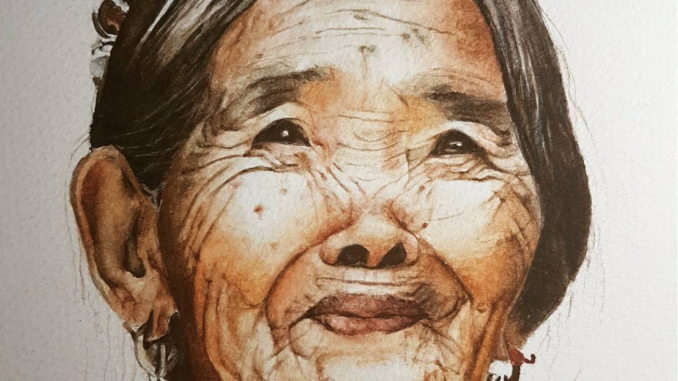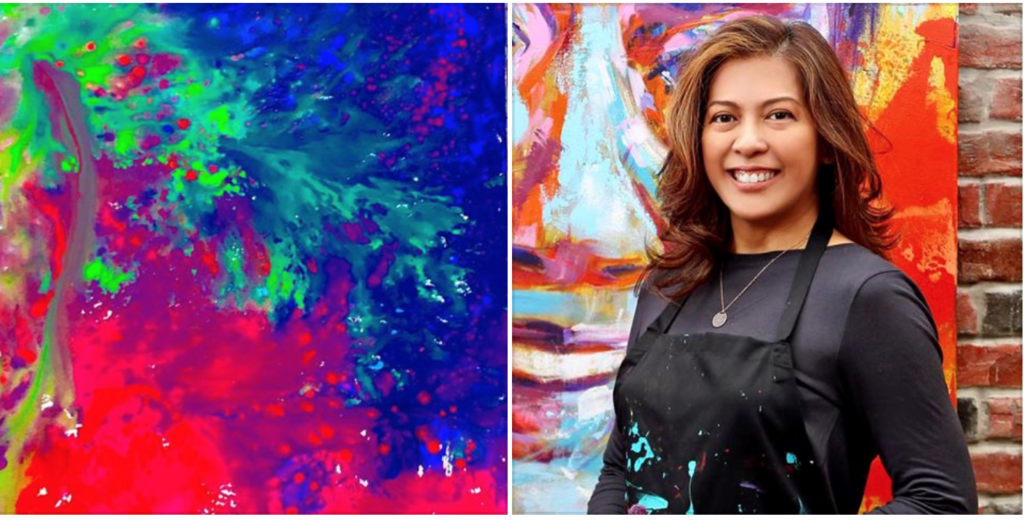
Businesses that combine arts and science outperform those which isolate art from science. They show 6% higher employment growth; 8% higher sales growth; 10% more productivity; and are 3% more likely to bring radical innovations to market.
These advantages hold across the entire economy, and are particularly strong for smaller firms, whether they are hi-tech or not. This supports the hypothesis that the impact of arts skills in the economy extends beyond the creative industries. (The Fusion Effect, The Economic Effect to Combining Arts and Science Skills, Nesta, 2016)
How does art do this? Art is the expression or application of human creative skill and imagination. To be creative, one must think independently in an original way. Though often associated with art, creativity is manifest in many industries and aspects of life as an effective way to solve problems.
Whether intentional or by accident, many products we use today are innovative because it introduced something new or changed something established. For example, the paper clip began as a wire that pierced papers together until someone thought to bend the ends to remove sharp edges; the Post-it uses a weak adhesive from experiments for a strong adhesive and it was adapted to stick removable notes on surfaces; the velcro employed the concept of burs that stuck to pants during the inventor’s hike; and Cartier attached a watch to a leather band (it used to be on a chain) so his aviator friend could keep his hands on the plane controls while keeping time.
Art is inherently tied to creativity and design. Just like technical skills, one needs training and mastery in art to develop creativity and come up with a good design. If we go beyond the limited definition of art as mere aesthetics, and innovation as mere novelty, both actually share the same elements of creativity and design.
“Often manifest in a very different domain, the elements are nonetheless the same: original ideas, technical mastery, and an audience.” (Design, innovation, and rural creative places: Are the arts the cherry on top, or the secret sauce? by Timothy R. Wojan & Bonnie Nichols, 2018)
Much has been said about creativity that spurs innovation to produce new products and services. But at its core, art is the origin of all creativity because it forces one to abandon traditional thought.
“Arts may play a role in making non-artistic creative workers more innovative.” (Wojan & Nichols)

Art is the basis for good design, and good design makes a good product. A good product is innovative when it changes the way consumers behave so that the product is widely adopted. Think of how tech companies like Amazon, Google, and Facebook changed our habits in shopping, searching, and connecting. Such innovation leads to more sales, company profits, workers, and continued growth.
It’s not a direct effect, but when art and science is integrated in the creation of a product or the search for a business solution, an alchemy of innovation results. AirBnb was founded by design majors who wanted a beautiful home rental site that was easy to navigate in three clicks. Aesthetics were also important for Instagram founders who loved photography and built an app where photos can be tweaked with filters, posted, and instantly shared.
“The findings were striking to the extent that design was most often associated with high levels of innovation; i.e., the introduction of novel products in the market.” (Wojan & Nichols)
In recognition of the importance of art in innnovation, businesses now merge art with science to increase workers’ competence.
“Furthermore, our results indicate performance benefits also arise from the accumulation of multiple skills. Of the firms using both arts and science skills, those firms that use a broader range of skills are more likely to grow, are more innovative and are more productive. Our results show that the accumulation of skills remains a vital element contributing to firm performance, regardless of size or sector.” (Nesta)
To compete in the digital economy, governments invest in STEM (science, technology, engineering, and mathematics) education. Likewise, companies that invest in STEM graduates outperform other firms in sales, employment growth, and innovation. Now, new research shows that STEM which includes arts (STEAM) enhances creative and technical skills.
“Further, we find that whereas STEM skills and arts skills on their own are associated with stronger business performance, the combination of arts skills with STEM skills provides additional value. Firms that combine these skills show…higher sales and employment growth, and are more productive and innovative.” (Nesta)
Even when a business is not concentrated in design, the inclusion of art in its business boosted its productivity and growth.
“[E]nterprises that self-identified as design-integrated were 3 times more likely to introduce a product, process, organizational or marketing innovation, relative to enterprises that self-identified as having no systematic approach to design. Design-integrated enterprises also demonstrated faster rates of employment growth, value added growth, and productivity growth relative to the non-systematic design enterprises.” (Wojan & Nichols)
Art is expressed through design which mediates people and technology. “Design provides a plausible bridge between the two parallel tracks of art and innovation….The mediation is both an applied art and a development activity critical to innovation.” (Wojan & Nichols)
Art makes us think creatively
Art involves creativity, and creativity springs from original thought. To come up with a new idea, we have to think in new ways. We need to abandon what has been done and what seems logical.
“As an applied art, design taps into many of the same non-rational ways of knowing exploited by art generally. As an innovation activity those non-rational ways of knowing are used to make technology more accessible, relevant, or meaningful, given our shared human experience.” (Wojan & Nichols)
Art brings about innovation by expanding and deepening thought.
“The backbone of innovation is associative thinking, which is the ability to successfully connect seemingly unrelated questions, problems, or ideas from different fields.” (Wojan & Nichols)
Magnetic Resonance Imaging (MRI), which measures activity in specific regions of the brain in real time, found that jazz improvisation induces associative thought . “The…area of the brain involved in self-censoring—the process that would inhibit associative thinking—was deactivated during improvisation.” (Wojan & Nichols)
But we don’t have to be actively involved in art to harness the benefits of free thinking. Some evidence suggests that artistic hobbies are commonly pursued by the most innovative minds. Many great thinkers dabble in the arts.
“A Nobel Laureate drawn at random would be 12 times more likely to pursue an arts avocation than a random member of the National Academy of Sciences. Relative to the general population, the Nobel Laureate would be nearly 30 times more likely to pursue an arts avocation. A study of Michigan State University Honors College science and technology graduates found that lifelong participation and exposure in the arts and crafts yields the most significant impacts for innovators and entrepreneurs.” (Wojan & Nichols)
Art exposure is important
“Recent research linking arts training of scientists and engineers to an increased capacity for finding nonobvious solutions provides initial evidence of a functional role for the arts in an arts-innovation nexus.” (Wojan & Nichols)
There are no studies that show a direct connection to art and innovation. But it is apparent that any exposure to art influences one’s thought, taste, and sense of beauty. Our background reflects our perceptions, expressions, and creations. It even affects our performance.
Even at a young age, a 2017 study found that students’ exposure to visual arts, music, theater, or dance encourages higher levels of school engagement and better socio-emotional development. This supports earlier studies where arts enable higher school achievement.
College art majors were found to be more developed in critical thinking dispositions of truth-seeking, maturity, and open-mindedness. These are important traits in creative problem-solving. When coupled with technical skills, art and technology create beautiful, lasting products that change the world.
Take the iconic Jonathan Ive, who designed the first colorful Apple desktop, translucent iBook, iPhone, iPads, and Apple stores. He trained in chemistry, woodshop, and drawing. His father was a craftsman who built furniture and silverware by hand and insisted that Ive sketch all his design plans before execution. Watching his father’s detailed work greatly influenced Ive’s commitment to good design, so that every aspect of Apple products have clean lines inside and out. Ive made Apple computers and electronics an enticing experience in beauty.
Our environment greatly influences creativity—richer surroundings activate imagination; stimulating conversations open the mind to new ideas; different experiences broaden perspectives; and inspiring events spur expression.
One study found that innovation is concentrated in certain geographic areas around the world, likely due to the fertile conditions that catalyze creation, like a rich cultural experience that encourages creativity. Such an exciting environment attracts creative minds, which could explain the growth of innovative hubs in Silicon Valley in California, US or the historically artistic centers in Paris, France and Florence, Italy.

More artists attract more creative workers
A greater proportion of artists compared to the general population creates a creative milieu which attracts more creative workers. “Economic performance also rates better in places with a richer creative milieu.” (Wojan & Nichols)
“Capitalism in the Creative Age is thus organized more around places that attract and mobilize talent and technology.” (Global Creativity Index)
But creative workers are not just those in creative industries.
The Global Creative Class is the share of the labor force engaged in creative occupations: computer science and math; architecture and engineering; social sciences; education; arts, entertainment, sports, and media; management, business, finance, law, sales, and healthcare. It makes up over 40% of the workforce in 18 nations across the globe. (GCI)
As shown above, the creative class applies their creativity and skills to their profession. It is not merely confined to the creation of artistic work. GCI recognizes that arts and STEM increase worker productivity, innovation, and economic growth.
“While the varied members of the working class had physical skills as a shared trait, the diverse groups of workers that make up the creative class all draw on their underlying human creativity.” (GCI)
The Global Creativity Index (GCI) measures creativity based on 3 T’s: Technology, Talent, and Tolerance. Technology involves R&D investment and innovation (patents). Talent measures the creative class and educational attainment (enrolled in tertiary education). Tolerance measures society’s openness to different kinds of people and orientations.
“Global creativity, as measured by the GCI, is closely connected to the economic development, competitiveness, and prosperity of nations. Countries that score highly on the GCI have higher levels of productivity (measured as economic output per person), competitiveness, entrepreneurship, and overall human development. Creativity is also closely connected to urbanization, with more urbanized nations scoring higher on the GCI.” (GCI)
Global creativity is the product of a nation’s creative application of STEM, training in arts and STEM, and the ability to hold conflicting thoughts at the same time, which all spark creativity.
The top ten countries in GCI are high income countries with many immigrants: Australia, US, New Zealand, Canada, Denmark, Finland, Sweden, Iceland, Singapore, and Netherlands. The rest are: UK (12), Germany (14), Switzerland (16), Hong Kong (21), and Japan (24).
Australia (1) is first in Talent. South Korea (31) is first in Technology. Canada (4) is first in Tolerance.
Philippines ranks 52 in overall GCI, above China (62), Vietnam (80), Thailand (82), and India (99).
Under the Talent Index, PH ranks 56 in Creative Class and 65 in Talent Index but did not even rank in Educational Attainment. PH’s low tertiary enrollment could explain its mediocre ranking in overall Talent. Apparently, the Philippines needs to train more in STEAM.
Art helps spur innovation
“The actual mechanism by which the arts enable innovation in local economies may be important for the types of arts policy and programming that have the highest economic development payoff. Clearly, if the arts serve a functional role in promoting more innovative thinking, then increasing arts participation and appreciation may warrant greater attention.” (Wojan & Nichols)

“Alternatively, if the arts serve mainly to advertise a place as welcoming to nonartistic creative talent, then recruiting the arts and marketing arts districts or events may be the appropriate focus. In either case, the conclusion of this research is that as a local development strategy, promoting the arts is likely to have a positive impact that extends beyond a direct economic impact to affecting the capacities of businesses reliant on design and innovation, either by attracting or enabling creative talent.” (Wojan & Nichols)
As businesses move towards algorithm, automation, and artificial intelligence, the need for human problem solving skills inherent in creativity becomes more critical. Investment in science, technology, engineering, and math (STEM) keeps firms competitive in the digital age. The merger of STEM with art keep businesses resilient during unpredictable technological upheavals. Governments and corporations need to foster art if they want to develop a highly skilled nation of creative talent.
VIEW THE MAGAZINE ARTICLE HERE:

